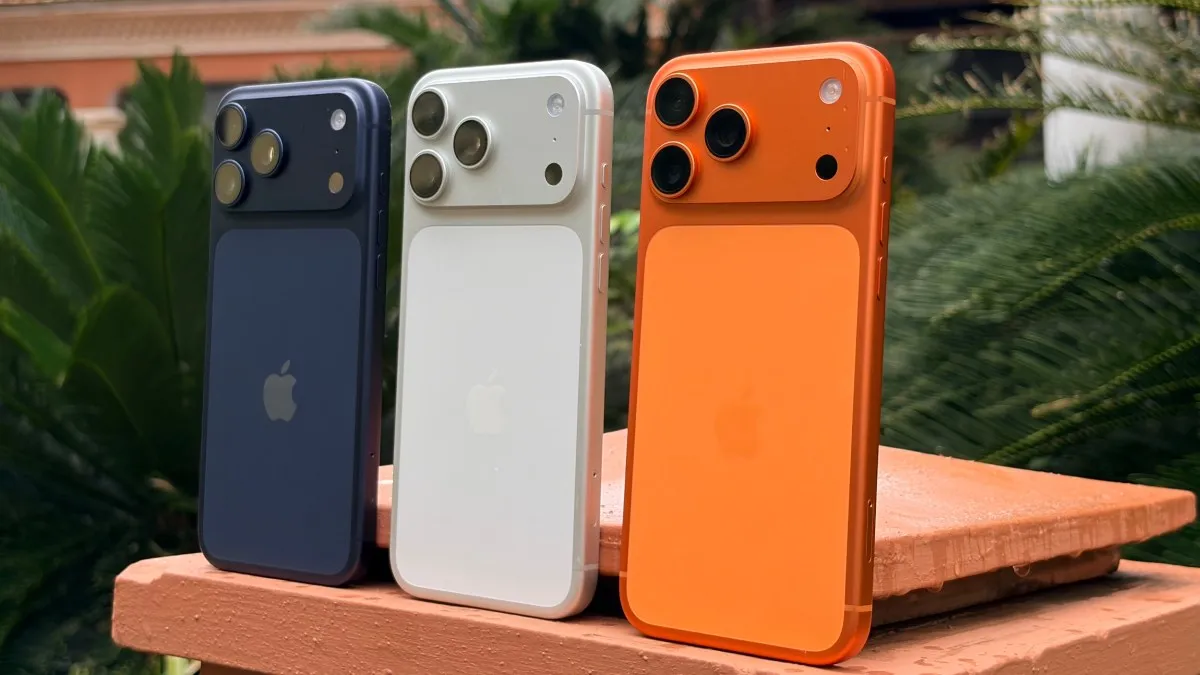
When Apple unveiled its latest device, the iPhone 17 Pro Max, it was met with mixed reactions. Following the introduction of the ultra-thin iPhone Air, many users questioned the need for a thinner phone. However, Apple quickly shifted gears, bringing back a slightly thicker and bulkier design for the iPhone 17 Pro lineup. This move aligns with user desires for a more robust device capable of housing a larger battery, ultimately enhancing performance.
The first noticeable change in the iPhone 17 Pro is its new unibody construction using aluminum, which complements the updated camera bump design. This new design features a dedicated space for MagSafe accessories, making it a practical choice for users. The shift towards a sturdier build has resulted in an increase in weight, with the iPhone 17 Pro Max weighing 233 grams, slightly heavier than its predecessor, the iPhone 16 Pro Max, which weighed 227 grams. Transitioning between the ultra-light iPhone Air and the heftier 17 Pro Max, the added weight is palpable.
In terms of durability, Apple has incorporated Ceramic Shield 2 on the front and the original Ceramic Shield on the back, enhancing protection against drops and scratches. Users will appreciate this upgrade, especially those who have experienced shattered glass in previous models. Color options are also noteworthy; while I received the silver model, which may seem subdued, the vibrant blue and eye-catching orange options stand out brilliantly. I'm eager to test out the new TechWoven blue case, crafted from 100% recycled polyester yarn, to give my phone a fresh look.
One of the most significant improvements in the iPhone 17 Pro Max is its superior battery capacity. The device houses a robust 4,823 mAh battery, compared to the 4,685 mAh battery found in the iPhone 16 Pro Max. In regions where it is available, opting for the eSIM-only version grants users an even larger 5,088 mAh battery, promising longer usage times. My experience showed consistent screen time exceeding five hours, even with varied usage patterns.
Additionally, the new unibody design allows for advanced vapor chamber cooling, keeping the device cooler during resource-intensive tasks. I tested the performance while playing War Thunder at 60 FPS and noted that the Pro Max maintained a lower temperature compared to the iPhone Air. This cooling technology is a game changer for gamers and heavy users alike.
The iPhone 17 Pro Max also boasts enhanced charging capabilities, now supporting USB-PD 3.2 standards. While it doesn't reach the extreme charging speeds of some competitors, it can charge at a theoretical rate of 40W, up from 30W, allowing for faster charging with compatible adapters. Moreover, the new model supports Qi2-based wireless charging at 25W, making it a convenient option for users with wireless charging stations.
The display remains the same size as last year's model but introduces a peak brightness of 3,000 nits and a new anti-reflective coating. This upgrade enhances visibility in bright conditions, following a trend seen in other flagship smartphones this year. While other devices may have better reflective technology, the iPhone 17 Pro Max's display is still a significant improvement.
Camera capabilities have seen considerable upgrades this year, with all three rear cameras now featuring a 48-megapixel sensor. The telephoto lens has received a boost, offering improved zoom capabilities. The iPhone 17 Pro Max now provides zoom options of 2x, 4x, and 8x (2x crop), which enhances versatility for photography enthusiasts. Although the digital zoom reaches up to 40x, it lacks the generative AI enhancements seen in competing devices, resulting in noisier images at maximum zoom levels.
On the front, the selfie camera has been upgraded to an 18-megapixel square sensor, featuring the new Center Stage functionality, which intelligently adjusts the frame based on the number of people in view. This feature is particularly useful during gatherings, ensuring everyone fits perfectly within the shot.
Despite the hardware advancements, Apple has notably downplayed its AI capabilities in this release. While the upcoming iOS 26 will introduce some new features, such as contextual assistance via AI, there are no significant native AI upgrades for Apple’s devices. The new Pro iPhones are powered by the A19 Pro chips, which promise enhanced neural performance, yet we may have to wait until next year’s Worldwide Developer Conference to see if Apple plans to revamp Siri's AI functionalities.
Apple has tailored its Pro line to cater to creative professionals, and the iPhone 17 Pro Max continues this trend. With improved design, battery life, and thermal performance, it is ideal for creators who need to shoot longer videos or utilize features like ProRes RAW and Log 2. The introduction of genlock allows multiple iPhones to be synchronized for time-sensitive shots, enhancing its appeal.
However, for non-creators, the iPhone 17 Pro Max may feel like an iterative update, lacking the urgency to upgrade. If your current phone is more than two years old, you will likely notice substantial improvements in battery life, performance, display, and camera capabilities. Conversely, if you've recently purchased a model after the iPhone 15 Pro, the incentives to upgrade may be limited.